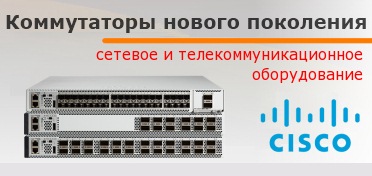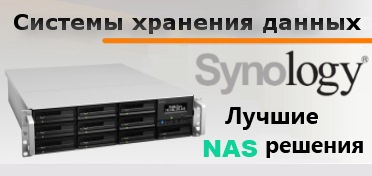
Спроектированные для провайдеров сетевых услуг, которые ищут возможности для расширения и развертывания резидентных услуг следующего поколения, таких как голос и видео, этот одноюнитовый затратоэффективный коммутатор может быть очень просто интегрирован в малый центральный офис с ограниченным местом под сетевое оборудование.
Агрегация коммутатора Cisco ME 4924-10GE Ethernet предоставляет коммутирование второго уровня U-PE агрегации, построенной для высокопроизводительных Ethernet сетей. Основанные на технологиях Catalyst 4900 Series, коммутаторы ME 4900 Series нужны для сервисных провайдеров, которые предоставляют услуги голосовые, видео и данных для резидентных клиентов.
Основные особенности:
- Лидирующая в отрасли проводная производительность в 48 Gbps и 71 миллион передающихся пакетов в секуду
- Низкая латентность с коммутацией 2-4 уровней
- Инновационная безопасность и возможности QoS
- Аплинки Gigabit Ethernet или 10 Gigabit Ethernet
- Опциональные внутренние AC или DC 1+1 энергоблоки с горячей заменой
- Вентиляторы с горячей заменой
- Сертификация MEF9 и MEF14 для EPL, EVPL и ELAN.
Спецификации
Performance and Switching Specifications
• 96-Gbps nonblocking switch fabric
• 71-mpps Layer 2 forwarding (hardware)
• 71-mpps Layer 3 and 4 forwarding - IP routing, Cisco Express Forwarding-based (hardware)
• Layer 2-4 hardware-based switch engine (application-specific integrated circuit [ASIC]-based)
• Unicast and multicast routing entries: 32,000
• Support for 4096 active VLANs and 4096 VLAN IDs per switch
• Layer 2 multicast addresses: 16,000
• MAC addresses: 55,000
• Policers: 512 ingress and 512 egress
• ACL or QoS entries: 32,000
• Uplinks: Four SFP ports and two X2 ports with support of Cisco Gigabit EtherChannel® technology
• Switched virtual interfaces (SVIs): 2048
• Internet Group Management Protocol (IGMP) snooping entries: 8000
• Scalability to 4094 Spanning Tree Protocol instances
• Bandwidth aggregation up to 16 Gbps through Cisco Gigabit EtherChannel technology
• Hardware-based wire-speed multicast management
• Hardware-based wire-speed ACLs
Layer 2 Features
• Layer 2 switch ports and VLAN trunks
• IEEE 802.1Q VLAN encapsulation
• Inter-Switch Link (ISL) VLAN encapsulation
• Dynamic Trunking Protocol (DTP)
• VLAN Trunking Protocol (VTPv3) and VTP domains
• Per-VLAN Spanning Tree Protocol Plus (PVST+) and Per-VLAN Rapid Spanning Tree Protocol (PVRST)
• Spanning-tree PortFast and PortFast guard
• Spanning-tree UplinkFast and BackboneFast
• 802.1s
• 802.1w
• Spanning-tree root guard
• Cisco Discovery Protocol
• IGMP snooping v1, v2, and v3
• 802.3ad
• Cisco EtherChannel technology, Cisco Fast EtherChannel technology, and Cisco Gigabit EtherChannel technology support
• Port Aggregation Protocol (PAgP)
• Unidirectional Link Detection Protocol (UDLD) and aggressive UDLD on the SFP ports
• Q-in-Q in hardware
• Layer-2 Protocol Tunneling (L2PT)
• Jumbo frames on all ports (up to 9216 bytes)
• Baby giants (up to 1600 bytes)
• Hardware-based storm control (formally known as broadcast and multicast suppression)
• Community private VLANs (PVLANs)
• Web Content Communication Protocol Version 2 Layer 2 Redirect
• Private VLAN Promiscuous Trunk
Layer 3 Features
• Static IP routing
• IP routing protocols: EIGRP, OSPF, RIP, RIP2
• OSPF/EIGRP Fast Convergence
• OSPF features: throttling, RFC 3623 graceful restart, link-state database overload protection, IP event dampening, redistribution limit, packet pacing, unlimited software VRFs, and inbound filtering
• EIGRP route map filteringBGPv4 and Multicast Border Gateway Protocol (MBGP)
• Hot Standby Router Protocol (HSRP)
• Software routing of IPX and AppleTalk
• IS-IS routing protocol
• IGMPv1, v2, and v3
• IGMP filtering on access and trunk ports
• IGMP Querier
• IP Multicast routing protocols (Protocol Independent Multicast [PIM], Source Specific Multicast [SSM], and Distance Vector)
• Multicast Routing Protocol (DVMRP)
• Pragmatic General Multicast (PGM)
• Cisco Group Management Protocol (GMP) server
• Full Internet Control Message Protocol (ICMP) support
• ICMP Router Discovery Protocol
• Policy-based routing (PBR)
• Virtual Route Forwarding-lite (VRF-lite)
• VRF Aware services
• IPv6 software switching support
• OSPF fast convergence
• EIGRP stub
• Virtual Router Redundancy Protocol (VRRP)
Sophisticated QoS and Traffic Management
• Per-port QoS configuration
• Per-port per-VLAN QoS
• Support for four queues per port in hardware
• Strict priority queuing
• Classification and marking based on IP type of service (ToS) or DSCP
• Classification and marking based on full Layer 3 and 4 headers (IP only)
• Input and output policing based on Layer 3 and 4 headers (IP only)
• Support for 512 policers on ingress and 512 policers on egress configured as aggregate or individual
• Shaping and sharing output queue management
• Dynamic Buffer Limiting (DBL): Advanced congestion avoidance
• No performance penalty for granular QoS functions
• ANCP enables a distributed, network based conditional access control for multicast, policy distribution and enforcement
Comprehensive Management
• Manageable through CiscoWorks network-management software on a per-port and per-switch basis, providing a common management interface for Cisco routers, switches, and hubs
• connect the Management Port to the management network for telneting to the supervisor without using the console port, even in IOS mode.
• Store multiple crashdumps in the bootflash
• Manageable through Cisco Network Assistant
• SNMPv1, v2, and v3 instrumentation, delivering comprehensive in-band management
• CLI-based management console to provide detailed out-of-band management
• Remote Monitoring (RMON) software agent to support four RMON groups (history, statistics, alarms, and events) for enhanced traffic management, monitoring, and analysis
• Support for all nine RMON groups through the use of a Cisco SwitchProbe analyzer (Switched Port Analyzer [SPAN]) port, which permits traffic monitoring of a single port, a group of ports, or the entire switch from a single network analyzer or RMON probe
• Analysis support, including ingress port, egress port, and VLAN SPAN
• Remote SPAN (RSPAN)
• Smartports macros
• SPAN ACL filtering
• Dynamic Host Configuration Protocol (DHCP) client autoconfiguration
• PPPoE IA (equivalent function as DHCP Option82 rewrite)
• Interface index (IfIndex) persistence
• HTTPS
• Time Domain Reflectometry (TDR)
• MAC address notification
Advanced Security
• TACACS+ and RADIUS, which enable centralized control of the switch and restrict unauthorized users from altering the configuration
• 802.1x RADIUS-supplied timeout
• Standard and extended ACLs on all ports
• 802.1x user authentication (with VLAN assignment, port security, voice VLAN, and guest VLAN extensions)
• 802.1x accounting
• 802.1x authentication failure
• 802.1x Private VLAN assignment
• 802.1x Private Guest VLAN
• Trusted boundary
• Router ACLs (RACLs) on all ports (no performance penalty)
• VLAN ACLs (VACLs)
• Port ACLs (PACLs)
• PVLANs on access and trunk ports
• DHCP Snooping
• DHCP Option 82
• DHCP Option 82 insertion
• DHCP Option 82 pass through
• DHCPv6 Relay Enhancements
• Port security
• Trunk port security
• Sticky port security
• Secure Shell (SSH) Protocol versions 1 and 2
• VLAN Management Policy Server (VMPS) client
• Unicast MAC filtering
• Unicast port flood blocking
• Dynamic Address Resolution Protocol (ARP) inspection
• IP Source Guard
• Community PVLAN
• Control Plane Policing
• 802.1x Unidirectional Controlled Port
• Voice VLAN Sticky Port Security
• Secure Copy Protocol (SCP)
• 802.1x Inaccessible Authentication Bypass
• MAC Authentication Bypass
Traffic and Congestion Management
• Number of queues: four queues per port
• Type of buffers: Dynamic
Switch Architecture Specifications
• Packet buffering: Dynamic, 16-MB shared memory
• CPU speed: 266 MHz
• Flash memory: 64 MB
• Synchronous dynamic RAM (SDRAM): 256 MB
Management
• CiscoWorks LAN Management Solution (LMS), including CiscoWorks Resource Manager Essentials
• CiscoView
• BGP4-MIB.my
• BRIDGE-MIB.my* (RFC 1493)
• CISCO-BULK-FILE-MIB.my
• CISCO-CDP-MIB.my
• CISCO-CLASS-BASED-QOS-MIB.my
• CISCO-CONFIG-COPY-MIB.my
• CISCO-CONFIG-MAN-MIB.my
• CISCO-ENTITY-ASSET-MIB.my
• CISCO-ENTITY-EXT-MIB.my
• CISCO-ENTITY-FRU-CONTROL-MIB.my
• CISCO-ENTITY-SENSOR-MIB.my
• CISCO-ENTITY-VENDORTYPE-OID-MIB.my
• CISCO-ENVMON-MIB.my
• CISCO-FLASH-MIB.my
• CISCO-FTP-CLIENT-MIB.my
• CISCO-HSRP-MIB.my
• CISCO-IETF-IP-MIB.my
• CISCO-IETF-IP-FORWARD-MIB.my
• CISCO-IETF-ISIS-MIB.my
• CISCO-IF-EXTENSION-MIB.my
• CISCO-IGMP-FILTER-MIB.my
• CISCO-IMAGE-MIB.my
• CISCO-IPMROUTE-MIB.my
• CISCO-L2-TUNNEL-CONFIG-MIB.my
• CISCO-L2L3-INTERFACE-CONFIG-MIB.my
• CISCO-LAG-MIB.my
• CISCO-MEMORY-POOL-MIB.my
• CISCO-NDE-MIB.my
• CISCO-PAGP-MIB.my
• CISCO-PAE-MIB.my
• CISCO-PING-MIB.my
• CISCO-PORT-SECURITY-MIB.my
• CISCO-PORT-STORM-CONTROL-MIB.my
• CISCO-PRIVATE-VLAN-MIB.my
• CISCO-PROCESS-MIB.my
• CISCO-PRODUCTS-MIB.my
• CISCO-RF-MIB.my
• CISCO-RMON-CONFIG-MIB.my
• CISCO-RTTMON-MIB.my
• CISCO-STP-EXTENSIONS-MIB.my
• CISCO-SYSLOG-MIB.my
• CISCO-VLAN-IFTABLE-RELATIONSHIP-MIB.my
• CISCO-VLAN-MEMBERSHIP-MIB.my
• CISCO-VTP-MIB.my
• DOT3-MAU-MIB.my (RFC 3636)
• ENTITY-MIB.my
• ETHERLIKE-MIB.my
• EXPRESSION-MIB.my
• HC-RMON-MIB.my
• IEEE8021-PAE-MIB.my
• IEEE8023-LAG-MIB.my (802.3ad)
• IF-MIB.my
• IGMP-MIB.my
• IPMROUTE-MIB.my
• NOVELL-IPX-MIB.my
• NOVELL-RIP SAP-MIB.my
• OLD-CISCO-TS-MIB.my
• PIM-MIB.my
• RFC1213-MIB.my (MIB-II)
• RFC1243-MIB.my (APPLETALK MIB)
• RFC1253-MIB.my (OSPF-MIB)
• RMON-MIB.my (RFC 1757)
• RMON2-MIB.my (RFC 2021)
• SMON-MIB.my (Internet-Draft)
• SNMP-FRAMEWORK-MIB.my (RFC 2571)
• SNMP-MPD-MIB.my (RFC 2572)
• SNMP-NOTIFICATION-MIB.my (RFC 2573)
• SNMP-TARGET-MIB.my (RFC 2573)
• SNMP-USM-MIB.my (RFC 2574)
• SNMP-VACM-MIB.my (RFC 2575)
• SNMPv2-MIB.my
• TCP-MIB.my
• UDP-MIB.my
• RIP SNMP MIB
Industry Standards
• Gigabit Ethernet: IEEE 802.3z and 802.3ab
• IEEE 802.1d Spanning Tree Protocol
• IEEE 802.1w rapid reconfiguration of spanning tree
• IEEE 802.1s multiple VLAN instances of spanning tree
• IEEE 802.3ad Link Aggregation Control Protocol (LACP)
• IEEE 802.1p class-of-service (CoS) prioritization
• IEEE 802.1Q VLAN
• IEEE 802. 1x user authentication
• 1000BASE-X (SFP)
• 1000BASE-SX
• 1000BASE-LX/LH
• 1000BASE-ZX
• RMON I and II standards
Indicator and Port Specifications
• Fan, PS1, PS2
• Power supply status: Green (operational), red (faulty)
• System status: Green (operational), red (faulty)
• Console: RJ-45 female
• SFP ports: Link
• Image management port: 10/100BASE-TX (RJ-45 female) data terminal equipment (DTE); green (good), orange (disabled), off (not connected)











